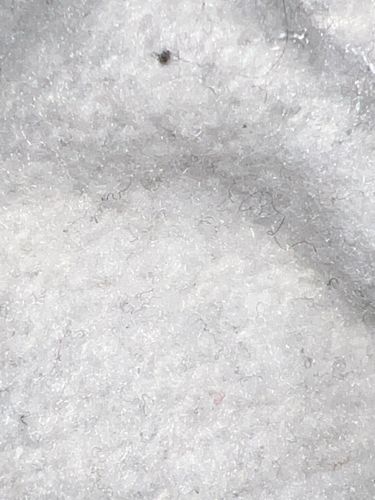Mold Mite (likely)
Scientific Name: Acarus spp. or Tyrophagus spp. (difficult to determine exact species from image)
Order & Family: Order: Sarcoptiformes; Family: Acaridae (or similar mite families)
Size: Typically 0.2 - 0.5 mm, almost microscopic to the naked eye.

Natural Habitat
Damp, humid environments with mold growth. Commonly found in stored food products (grains, cereals, cheese), decaying organic matter, and sometimes in household dust when conditions are right.
Diet & Feeding
Feeds on fungi, yeast, and decaying organic matter, especially mold. Can also feed on processed grains and other stored food products.
Behavior Patterns
Mold mites are often found in large aggregations when conditions are favorable. They are slow-moving and can be transferred between locations on infested items. Under dry conditions, they may die or become dormant. Their life cycle is dependent on humidity and temperature, and can be completed in a short period (days to weeks).
Risks & Benefits
Potential risks include contamination of stored food products, leading to spoilage and economic losses. In some individuals, exposure or inhalation of mites and their excretions can trigger allergic reactions (e.g., asthma, dermatitis). They are generally not known to bite humans or transmit diseases directly. There are no known direct benefits to humans, but as decomposers, they play a minor role in breaking down organic matter in ecosystems.
Identified on: 10/22/2025